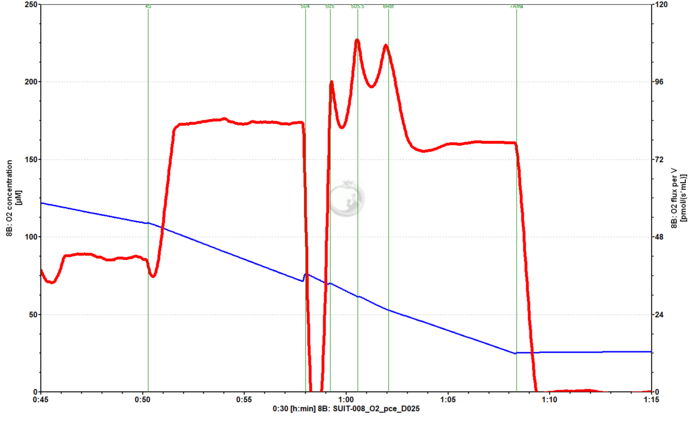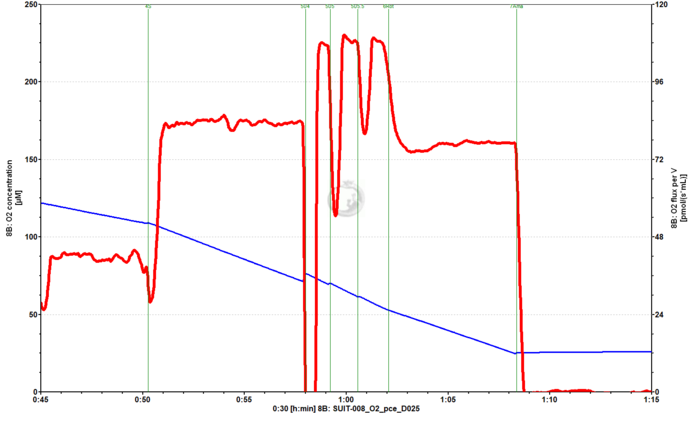Description
Various methods of smoothing can be applied to improve the signal-to-noise ratio. For instance, data points recorded over time [s] or over a range of wavelengths [nm] can be smoothed by averaging n data points per interval. Then the average of the n points per smoothing interval can be taken for each successively recorded data point across the time range or range of the spectrum to give a n-point moving average smoothing. This method decreases the noise of the signal, but clearly reduces the time or wavelength resolution. More advanced methods of smoothing are applied to retain a higher time resolution or wavelength resolution.
Reference: Press 1990 Computers in Physics
MitoPedia methods: Respirometry, Fluorometry, Spectrophotometry
MitoPedia O2k and high-resolution respirometry:
DatLab,
Oroboros QM
Communicated by Harrison DK, 2011-11-25
DatLab oxygen flux: performance and data analysis
- Recommendation: Set "Slope smoothing" to 20 for performing and analyzing experiments with biological sample (strongly recommended in the case of uncoupler titrations). A slope smoothing of 20 increases the time or wavelength resolution, but increases the noise of the signal.
- The following DatLab traces illustrate an example of "Slope smoothing" using 20 versus 40 data points:
- In DatLab 7.4: open the "Flux/Slope" window by clicking in the upper menu, "A: or B: O2 slope" (or or double-clicking in "Y2", O2 flux). Select the slope smoothing in the pulldown menu and click "ok". A confirmation window might appear, click "yes" to confirm.
DatLab Amp slope: performance and data analysis
- Recommendation: Set "Slope smoothing" of the Amp slope to 20 for performing and analyzing experiments with biological sample (strongly recommended in the case of uncoupler titrations). A slope smoothing of 20 increases the time or wavelength resolution, but increases the noise of the signal.
- The following DatLab traces illustrate an example of "Slope smoothing" using 20 versus 40 data points:
- Slope smoothing: 20
- Slope smoothing: 40
- In DatLab 7.4: open the "Flux/Slope" window by clicking in the upper menu, "A: or B: Amp slope" (or or double-clicking in "Y2", Amp slope). Select the slope smoothing in the pulldown menu and click "ok". A confirmation window might appear, click "yes" to confirm.




